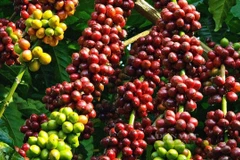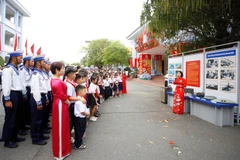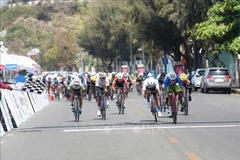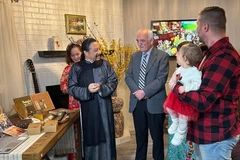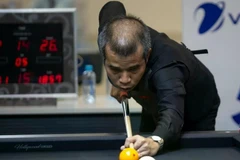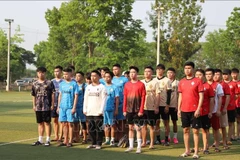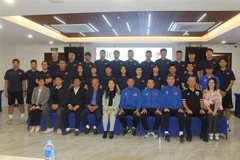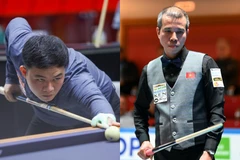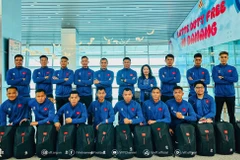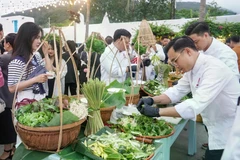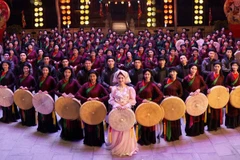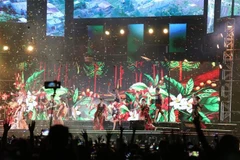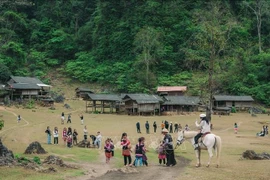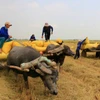Hue City (VNA) – Van Cu vermicelli is not only an important ingredient in Hue’s cuisine but has also become a symbol that contributes to the reputation of spicy beef noodle soup (Bun Bo Hue) – a famous specialty of the ancient capital.
Van Cu village, located in the north of Hue city, stretching along the picturesque southern bank of the Bo River, is famous for the craft of vermicelli-making.
For over 400 years old, Van Cu vermicelli has been regularly brought to various markets, eateries, and restaurants throughout the central city.
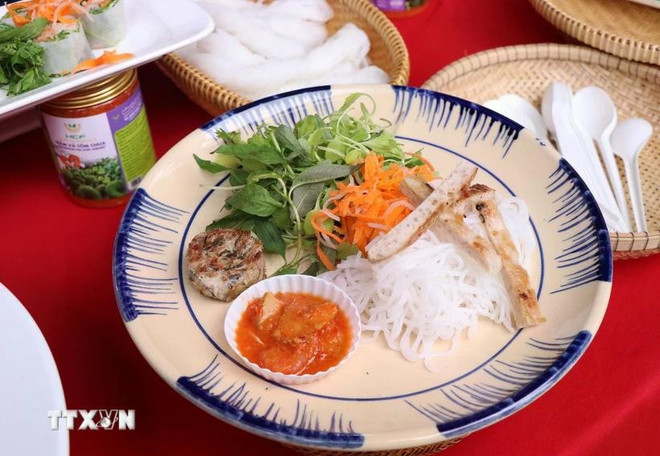
Century-old craft
Vermicelli-making in Van Cu village has not merely been a means of livelihood of local people but has also been regarded as a unique cultural feature, clearly reflecting their life and spirit.
It is said that once upon a time, a group of people from the North followed Lord Nguyen Hoang southward, choosing Co Thap village (now in Quang Dien district) to establish their residence. Among the group was a girl who was both beautiful and talented, always receiving affection from everyone.
While most villagers were primarily engaged in farming, that girl stood out by choosing the profession of making vermicelli from local rice grains. Thanks to her skilled craftsmanship and the delicious flavour of her vermicelli, she was affectionately called "Miss Bun."
However, some envious individuals exploited poor harvests in the region for three consecutive years to spread rumours that the deities were punishing the villagers. They claimed the reason was that "Miss Bun" had soaked, scrubbed, and ground rice, called the “heavenly gift", into vermicelli.
The villagers were outraged and pressured her to choose between giving up her profession or leaving the place. Determined to preserve her work, she decided to leave.
She was allowed to choose her path and was accompanied by five strong young men to help transport the heavy stone mill. Together, they moved eastward. When the fifth young man became exhausted, she realised that the place they stopped was the place where the Gods wanted them to stay.
She decided to choose Van Cu as her home and to develop her career.
Here, she passed on the secrets of making vermicelli to the local people. Over time, the craft flourished, becoming a famous brand.
Since then, the art of vermicelli-making has been preserved by the descendants of Van Cu through generations. Van Cu is the only locality in central Vietnam that holds a ceremony to honour the patroness of the craft on the 22nd of the first lunar month.
Making vermicelli is not just a combination of rice, water, and the skillfulness of Van Cu artisans, but also embodies spiritual values, representing the culmination of traditional craftsmanship over many generations.
The local makers not only create products for sale but also work with a profound love for their craft, deep pride, and appreciation for the heritage left by their ancestors.
In Van Cu village, almost all families wake up at dawn to prepare for the morning market. They must soak the rice, grind it into a paste, and meticulously prepare every step the night before.
The rice is carefully soaked to remove all impurities, then rinsed again with cold water to ensure it is truly clean. Next, the process moves on to grinding the rice, kneading the dough, shaping it, and cooking the noodle strands.
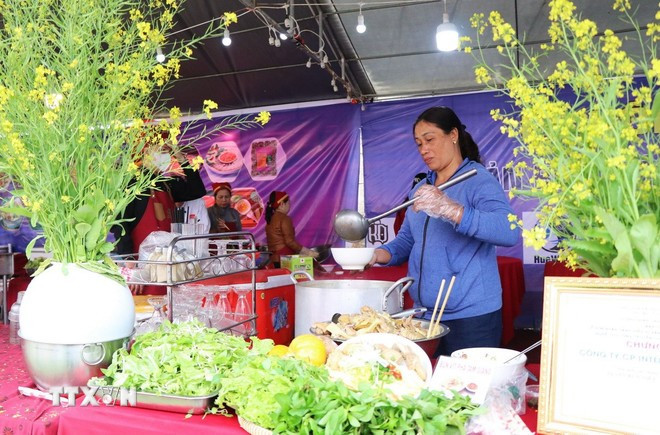
Van Cu vermicelli is well known not only for its delicious and distinctive flavour but also for its meticulous and sophisticated preparation process. What sets it apart is that the locals do not use any additives other than natural salt.
As a result, the vermicelli forms a rare smoothness, a pristine white colour, and a shiny, attractive surface. When eaten, it does not have a sour flavour. Instead, it carries a gentle aroma of rice flour, with the right texture, ensuring it is neither mushy nor too hard.
In the past, vermicelli production followed traditional methods that required a lot of time and effort. Today, the villagers have adopted modern machinery, which saves time and labour while ensuring quality, food safety, and higher productivity.
Tourist attraction
According to the Huong Toan commune People's Committee, Van Cu village currently has 125 households engaged in vermicelli-making, accounting for nearly one-third of the total 399 households in the village. Approximately 325 workers are regularly involved in the craft.
Currently, the village plays an important role in supplying vermicelli to many restaurants and eateries in Hue city as well as neighbouring provinces.
Last year, the craft of Van Cu vermicelli-making was officially recognised by the Ministry of Culture, Sports and Tourism as a national intangible cultural heritage.
An exhibition space for Van Cu vermicelli is to be set up at the “Miss Bun” temple. Local authorities will organise practical activities and training to preserve and promote the values of the intangible cultural heritage. Additionally, supportive and encouraging policies will be integrated to promote the sustainable development of the craft./.






